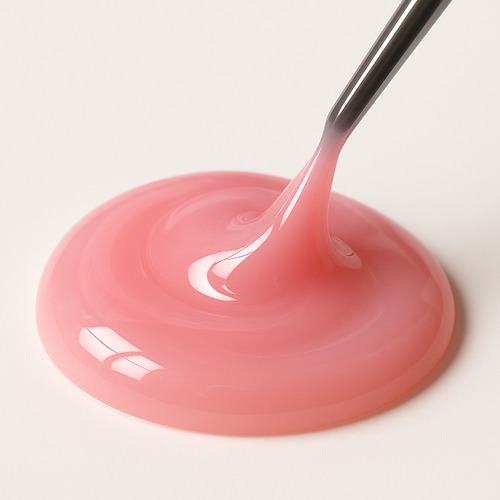Manicures are usually divided into two categories: those that start chipping after just a few days, and those that remain flawless until you decide to visit the salon. The secret to the durability of the second category often lies in a special ingredient — builder gel.
On social media, it’s called a true lifesaver for weak and brittle nails, and professional nail artists recommend it to everyone who frequently experiences chipping or quickly loses the perfect manicure. But how effective is this product really?
In our new article, we take an in-depth look at builder gel: how it works, its benefits, and why it is gaining increasing popularity among fans of beautiful and long-lasting manicures.
What is Builder Gel for nails?
Builder gel is not just an ordinary gel; it’s a high-strength, dense formula designed to strengthen the nail plate and support its growth without cracks or peeling. It combines the perfect hardness with the necessary elasticity, can be applied in a thicker layer, smooths the nail surface, and protects against chips and damage.
It’s the ideal choice for those who dream of long nails but cannot grow them naturally. Thanks to its texture, builder gel correctly shapes the nail’s architecture, providing reliability and stability even with an active lifestyle. Visually, the manicure remains natural and elegant, while the strength and durability of the coating far exceed the capabilities of regular gel.
Is it possible to apply builder gel at home by yourself?
Applying builder gel is best entrusted to a professional, as it requires precision and attention to detail. Using too much gel can cause it to spread onto the cuticle, and an incorrect nail shape at the initial stage can make the manicure heavy and increase the risk of chipping.
If you want to learn how to work with builder gel at home, start with basic video tutorials, a small amount of gel, and simple nail shapes. Don’t rush—this skill develops gradually, and instant results should not be expected. For home use, pre-filled bottles with brushes are especially convenient, as they are much easier to apply than gel from a jar.
How long does a builder gel manicure last?
Typically, builder gel lasts on the nails for about 20 days. Sometimes it can last longer, but this depends on how carefully you take care of your nails and the surrounding conditions. Any lifting of the gel at the edges or cracks at the base of the nail is a clear sign that it’s time to visit a nail salon.
Many people think that if the manicure doesn’t cause discomfort, it can be worn for two to three months. In reality, prolonged wear of gel increases the risk of damage to the nail plate. A simple accidental bump against a hard object can allow moisture to accumulate under the lifted gel—a perfect environment for fungal growth. Scary, right? It’s better to prevent the problem than to deal with the consequences later.
How to properly care for nails using builder gel?
Never peel off builder gel with your hands, orange sticks, or any other tools! The safest way to remove it is using a professional manicure device or special gel-removal products. Between manicures, make sure to care for your nails by using nourishing oils and strengthening treatments to keep them healthy and strong.
To maintain the strength and beauty of your natural nails, choose an experienced nail technician who does not handle the nail plate too aggressively. Don’t forget to give your nails a break between manicures: every 2–3 months, allow them to rest and recover, using only a protective nail polish.
Who is Builder Gel Suitable For?
If your nails are thin, brittle, or prone to splitting, builder gel can be an excellent solution. It not only strengthens the nail plate but also gives your nails a neat and elegant appearance. This option is especially convenient for those who often deal with chips and don’t want to spend a lot of time on frequent salon visits.
However, if you have a sensitive nail plate, are allergic to certain ingredients, or like to change nail colors often, builder gel may be too thick and costly. In these cases, it’s better to consider a soft gel or a classic polish with a strengthening base—they protect the nail while being gentler and easier to maintain.

